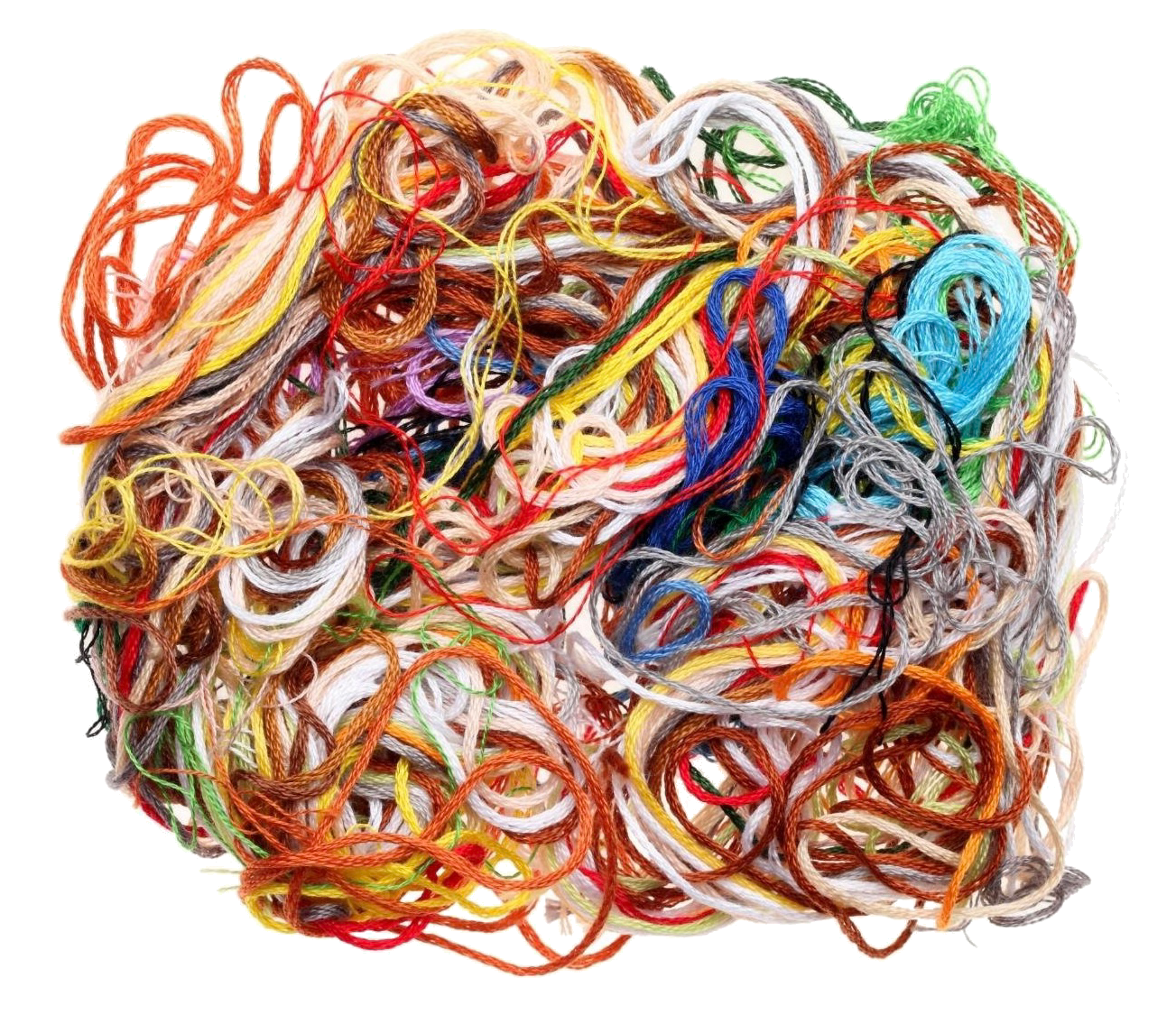What are the main differences between embroidery thread and quilting thread, and can you use embroidery thread for quilting? The upshot is that embroidery thread is suitable for embroidering pieces of the quilt top, but much less suitable for holding parts of the quilt top together with the other layers of the quilt.
Embroidery thread can be used to create beautiful, three-dimensional patterns on a quilt top, but in order to ensure the longevity of the quilt it is best to use quilting thread for the purpose of holding different sections of the quilt together.
What Is Embroidery Thread?
Embroidery thread is yarn that is manufactured specifically for the purpose of embroidering a piece of fabric of garment. Different types of embroidery thread include:
- Crewel yarn, a fine wool yarn;
- Embroidery floss, a loosely twisted, slightly glossy thread, usually made of cotton, silk, linen, polyester or rayon;
- Matte embroidery cotton, twisted thread that is non-glossy;
- Medici, a light-weight wool thread;
- Perle cotton, an S-twisted thread with high sheen;
- Persian yarn, a loosely twisted wool or acrylic yarn; and
- Tapestry yarn, a tightly twisted yarn.
Generally, rayon embroidery floss is the most popular embroidery thread due to its high sheen and affordability. However, polyester embroidery thread is increasing in popularity because the colours tend to be more durable than rayon.
Historically, embroidery gained popularity in Europe with the rise of the Christian faith, with many powerful figures commissioning large, embroidered pieces as a sign of their wealth. Frequently, tablecloths and wall hangings were produced in rich, royal colours of red and purple. It was also a sign of wealth and importance in the Islamic world at the time, in addition to in countries such as China, where it is believed to have first originated.
What Is Quilting Thread?
Quilting is the process of sewing multiple pieces of fabric together to make a thick, padded material. As the name suggests, most of the time a quilt is the end product, although the technique of quilting can be used for a wide range of projects.
The origin of the term ‘quilt’ is linked to the Latin word culcita, meaning ‘cushion’. The term is believed to have first been used in England in the 13th century, although there is evidence that an older form of quilting had been used throughout the world before the term was coined.
The earliest known quilted garment is depicted on the figure of an Ancient Egyptian, believed to have been constructed around 3400 BC. Evidence of quilting was also found in Mongolia, dating between 100 BC and 200 AD. Historically, heavy quilts were a sign of great wealth, and the more lavishly embroidered they were, the better!
In modern-day quilting, there are usually three layers: the quilt top, a middle layer of padding and the backing material.
Quilting thread is usually cotton, polyester or a blend of both. Quilting thread is mercerized, meaning that it has been treated under tension with alkali. This increases the strength of the thread, and the durability of the dye that is used to colour it. It’s designed to pass through the fabric easily without damaging it, and hold pieces of the quilt top together, along with the middle and backing layers.
What Are The Differences Between Embroidery Thread & Quilting Thread?
Strength
Quilting thread is much stronger than embroidery thread, due to the fact it is usually made at least partly with polyester, and has been mercerized. It needs to be stronger because it is designed to hold heavy patches of fabric together. The strength of quilting thread ensures the durability of the quilt throughout its use, which is especially important if the quilt is going to be passed down the generations of your family.
Embroidery thread does not have the same strength, especially if it is rayon embroidery floss. Embroidery thread is designed for the decoration and embellishment of fabric and clothing garments, and therefore does not need to be as strong.
Finish
The finish of embroidery thread is more important that the finish of quilting thread, because a great sheen makes a piece of embroidery shine and stand out as an embellishment. Because of this, embroidery threads have a looser twist, and processes to make the thread shine are including in the manufacturing process.
The finish of a quilting thread is much less important because its primary job is to be strong enough to hold large pieces of fabric together at the seams.
Weight
There is not usually much difference is the weight of embroidery thread and quilting thread. Embroidery thread is commonly a 35 or 40-weight, whereas quilting thread is often 50-weight.
The weight of the thread really comes down to the final effect that the quilter wants, and what suits the project the best.
Can You Use Embroidery Thread For Quilting?
Embroidery thread is ideal for embroidering patterns on to fabric patches of your quilt (the ‘quilt top’), but not necessarily for holding the patches of fabric together.
The sheen of a radon embroidery floss will stand out beautifully as 2D or 3D designs on your quilt, but may not last well if used to join the sections of fabric at the seams. A quilting thread is much better suited to this purpose, because it has been fortified to increase its strength. If you want your quilt to last for generations to come, consider using specialist quilting thread for this purpose.
Whichever thread you decide to use, make sure you’re using the right needle. Read our guide on embroidery needles here. Unsure which fabric would work best with your embroidered piece? Read our guide on embroidery fabrics here.

